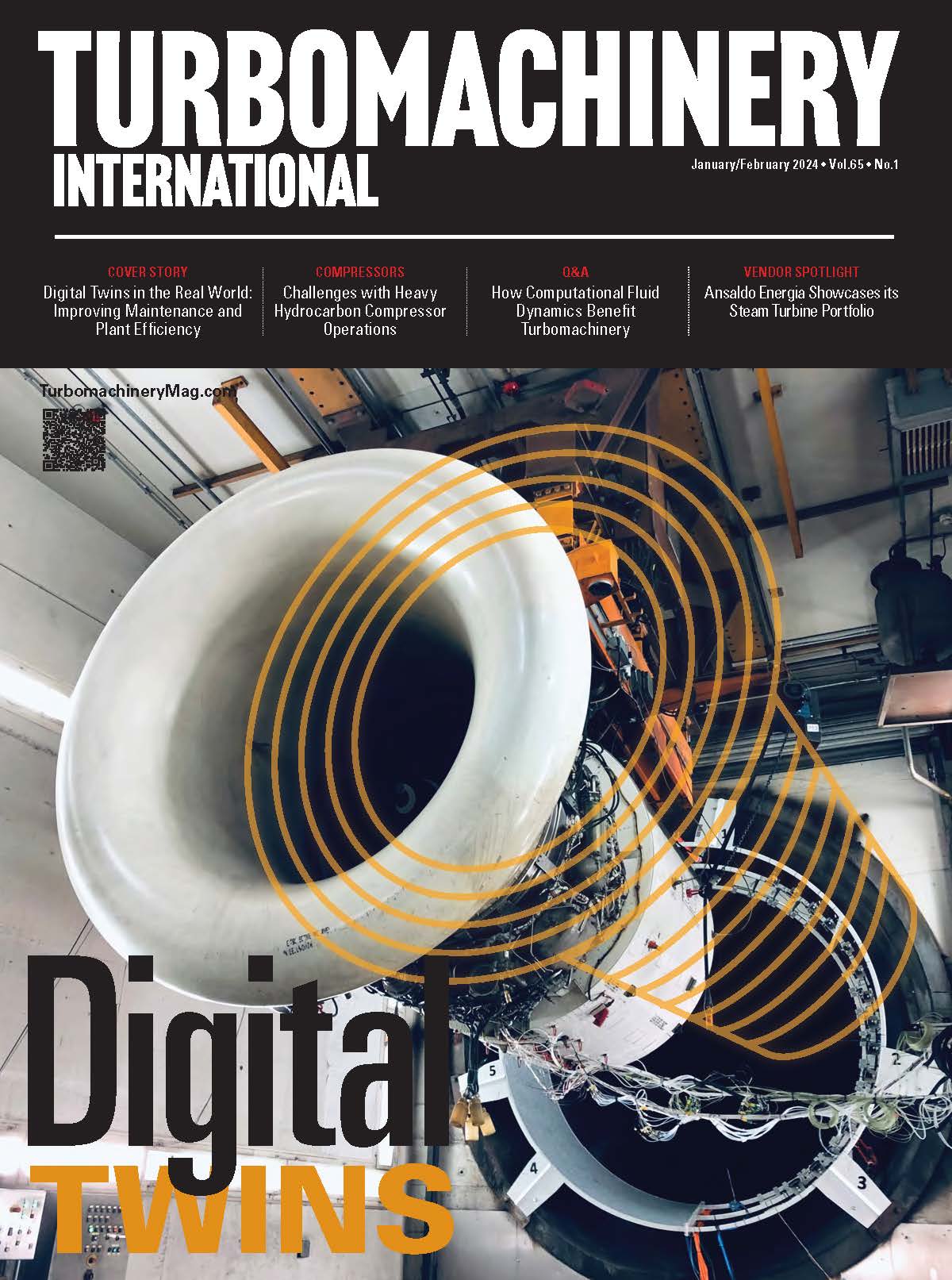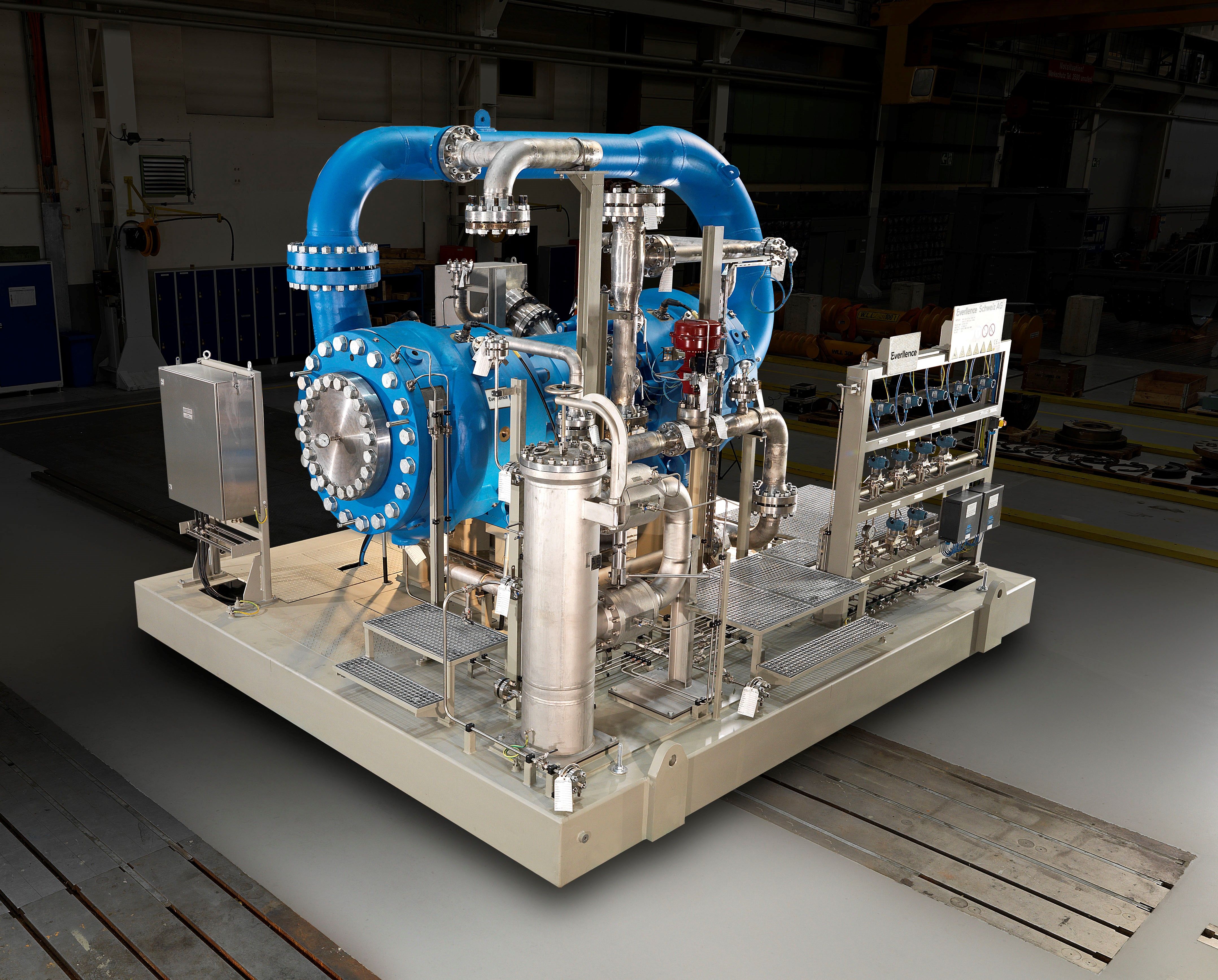Feature
Article
Turbomachinery Magazine
Myth Busters: Green Hydrogen for Power Generation: Is It a Unicorn?
Author(s):
Green hydrogen is receiving a lot of hype in the news, but a closer look reveals how impractical its future is for power generation.
Approximately 76% of the carbon dioxide that is emitted in the United States by stationary sources comes from electricity-generating power plants. For many other major industrial countries, the percentage is even higher. Clearly, this is a significant motivating factor to decarbonize the power-generation industry using alternative energy sources, such as nuclear energy, hydrogen-fueled thermal power plants, as well as carbon capture with existing plants.
Blue hydrogen—produced from fossil fuel with carbon capture—and green hydrogen—produced from alternative energy sources—are often prominently displayed in the technology mix needed for the future of a decarbonized energy economy. However, green hydrogen for power generation is a rare animal, a unicorn, or some other mythological beast. Everyone believes in it, but nobody seems to have actually seen one credibly. I’ve been desperately seeking this unicorn for the last 30 years, and I still haven’t found it. There are images and talk about large power-generation projects for green hydrogen all over the news, but when you truly chase them, they seem to disappear or fade into obscurity.
Obviously, we may be exaggerating a bit to make a point, but green hydrogen is one of those topics that is hyped in the press but very little is actually produced. Over 99% of the world’s hydrogen that is currently produced comes from fossil sources and does not include carbon capture. Therefore, it generates significant amounts of carbon dioxide in the production process and is far from being green.
So, what is green hydrogen? As mentioned above, it is hydrogen produced by electrolyzing water using electricity solely from alternative energy sources such as wind, solar, and hydropower. Electrolyzers use an electrochemical reaction to split water molecules into their molecular components: hydrogen and oxygen. There are various types of electrolyzers commercially available to produce hydrogen. They usually operate at relatively low pressures (mostly below 20 bars), near ambient temperatures, and at efficiencies between 40% - 80%. Higher-pressure electrolyzers are being explored, but they seem to mostly operate at lower efficiencies. Regardless, by using electrolysis, green hydrogen is produced without any greenhouse gas emissions. Turbomachines, such as compressors, are then required to transport and store this hydrogen at elevated pressures so it can be practically used in industrial and power-generation applications.
Electrolysis requires large amounts of electricity and thus only makes sense if electricity is very cheap or freely available. Since the conversion efficiency of electrolysis is less than one on an electric energy in (electric kW-hr) versus hydrogen chemical heat energy out (in Joules or BTU) basis, it is self-evident that this concept only works for energy-storage applications where electricity is available from intermittent, non-dispatchable power plants, such as wind turbines or photovoltaic solar panel farms. This is also called “curtailed” energy since it is being produced at times or in locations where there is no demand for it and it does not have an immediate or practical use. Hydrogen from green electricity is effectively nothing more than an energy-storage technology option and possibly an energy transportation alternative if one considers hydrogen transport by pipeline, truck, rail, or ship.
It is important to emphasize that green hydrogen is only truly green if it comes from intermittently curtailed electricity. It must come from zero-carbon sources AND from electricity that otherwise has no uptake. That means wind turbines or photovoltaic plants producing electricity that are unable to sell it into the market due to a lack of utilization requirements or transmission capability. Otherwise, the production of green hydrogen will only create an opportunity for non-green (mostly fossil) power plants to sell into the electric market.
Also, nuclear- and hydropower-produced hydrogen make no sense given that all nuclear and hydropower plants are baseload plants, which means that all their electricity already has an assigned market—which, by definition, is what baseload power is. Again, taking any of this electricity to make hydrogen will only create opportunities for non-zero-carbon power plants to fill the gap.
Similarly, green hydrogen produced from dedicated zero-carbon power plants, which are built and exist for the sole purpose of exploiting government subsidies for hydrogen, is basically taking taxpayer money to produce electricity and wasting most of it with an inefficient conversion process. If this hydrogen is purposed for electric usage, at least 55% (and usually more than 60%) of the originally produced electricity is lost because of the low roundtrip efficiency of this process.
BLUE HYDROGEN
Blue hydrogen, which is at times falsely claimed as carbon neutral, is not necessarily green. Blue hydrogen is produced from natural gas using processes such as steam reforming or gasification, where natural gas and steam react to form hydrogen but also carbon dioxide. To make hydrogen “blue,” the carbon dioxide must be captured and sequestered. For example, if blue hydrogen is produced from natural gas using steam reforming, about 10 kgs of carbon dioxide are produced for every kilogram of hydrogen when including all process parasitic losses. For power-generation purposes, blue hydrogen also competes with methods to remove carbon dioxide from the exhaust stream of fossil power plants. In either case, it is expensive and energy-intensive to capture, transport, and sequester this carbon dioxide. Some of the proposed storage methods have limited assurance that they will not leak or escape over the long term.
Green hydrogen without subsidies, even if electricity is free and continuously supplied, is usually three to four times more expensive than blue hydrogen— including all costs of separation and sequestration. This is primarily driven by the electrolyzer’s first cost and overhaul/ maintenance costs. Unfortunately, there does not seem to be a near- or mid-term foreseeable technology path to drastically reduce electrolyzer costs. Thus, blue hydrogen will likely dominate over green hydrogen production for basic economic reasons unless it is replaced by highly subsidized green hydrogen or other government subsidies for green energy producers.
DOES GREEN HYDROGEN REALLY EXIST, AND IF IT DOES, SHOULD IT?
If excess power is produced by zero-carbon power plants, the emphasis should be on developing the electrical grid and distribution network to make sure this electricity finds a home rather than wasting most of it by converting it to hydrogen and then back to electricity. That is the key: Green hydrogen only makes sense if electricity needs to be stored or chemical hydrogen is actually needed at the end of the supply chain, e.g., for fertilizer or petrochemical use. Most power plants, especially wind farms, can shut their equipment down when they cannot find an off-taker for their electricity to keep mechanical wear, degradation, and operating costs to a minimum. Running a plant when there is no market for the product makes little economic sense. It only makes sense if the produced and stored hydrogen has a reasonable monetary value equivalent to at least the cost of producing it. Currently, in many cases, the only reason these power plants keep producing electricity is so that they can collect a production credit, which is basically just another artificial government subsidy.
METHANE EMISSIONS MYTH
As a quick aside, the often-advertised conversion of natural gas to blue hydrogen does not directly help to reduce methane emissions since in almost all cases the blue hydrogen is produced at the back end of the oil and gas value stream. Therefore, all methane-leakage losses happen during production and transport and are fully incurred by the time of the natural-gas-to-hydrogen conversion. For a power plant, blue hydrogen is local pre-combustion carbon separation and simply an alternative to exhaust gas (post-combustion) carbon capture. Also, hydrogen is hard to compress, store, and transport and has significant safety and leakage challenges associated with it (but that is a good topic for another Myth Busters article). Thus, the transport of blue hydrogen over longer distances makes little sense, as even the combined transportation energy of natural gas to the production site and the transport of the resulting carbon dioxide to a sequestration site requires less energy than the transport of hydrogen.
Consequently, an industry transition to green hydrogen is neither realistic nor necessarily desirable. If excess power is produced by zero-carbon power plants, the emphasis should be on developing the distribution network to make sure this electricity finds practical usage rather than wasting most of it by converting it to hydrogen and then later back to electricity.
We see the development of the decarbonized energy economy as a gradual evolution with the first steps focusing on zero-carbon electric sources—wind, solar, hydro, and nuclear—in combination with carbon capture in fossil-fueled power and blue hydrogen production plants. The onset of the production of appreciable quantities of green hydrogen is a much longer-term but necessary development that will require significant investment in the development of new technologies and infrastructure. In the near term, there is an obvious need for additional natural gas supply as a reliable and secure decarbonization transition fuel which, from a turbomachinery perspective, means more conventional production, pipeline, and LNG machinery. In the mid-term, we will likely see more pre- and post-combustion carbon capture from existing fossil-fueled power plants. This will require new compression machinery for the efficient transport and geological storage of carbon dioxide. The need to compress large quantities of green hydrogen for pipeline transport and storage is less likely to be an immediate requirement. It will probably remain a mythological beast for a little bit longer. The hope is that in the not-too-distant future, we will finally chase this unicorn down.
ABOUT THE AUTHORS
Klaus Brun is the Director of R&D at Elliott Group. He is also the past Chair of the Board of Directors of the ASME International Gas Turbine Institute and the IGTI Oil & Gas applications committee.
Rainer Kurz is a recent retiree as Manager of Gas Compressor Engineering at Solar Turbines Inc. in San Diego, CA. He is an ASME Fellow and has published over 200 articles and papers in the turbomachinery field.
For more on hydrogen, check our expert roundtable. Click here to read Part I, Part II, and Part III.

Newsletter
Power your knowledge with the latest in turbine technology, engineering advances, and energy solutions—subscribe to Turbomachinery International today.





